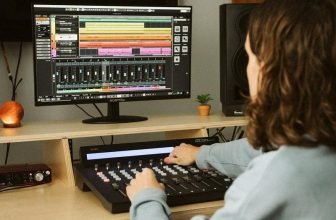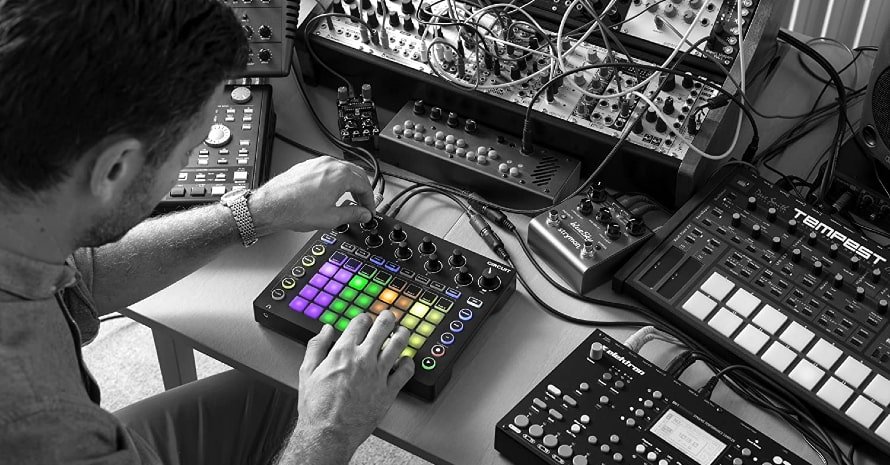What Is a Drum Machine?
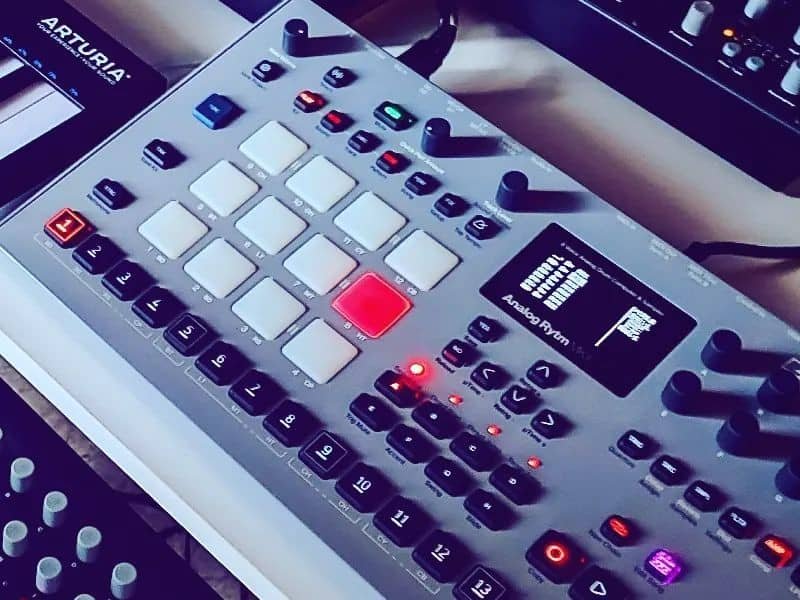
What is so valuable in contemporary music that it unites all those who fall under its influence? Of course, it’s the rhythm. Without a quality percussion part with a complex rhythmic pattern and a variety of syncopated fragments and strokes, it is impossible to imagine a popular composition.
But recording “live” drums are very expensive and very time-consuming. It is one thing if a band records an album that they plan to play at a real venue later on. Working on such an album can take months. It is another thing when one or two compositions are mixed.
For each of these at least 8 hours of work in the studio are required. Yes, and also it is necessary to pick up a suitable room. The most obvious alternative is a modern and functional drum machine.
What is a Drum Machine?
Contents
What is a drum machine? The device, the name of which sounds the same in English and in Russian, is an ordinary electronic module that simulates the work of a drum kit.
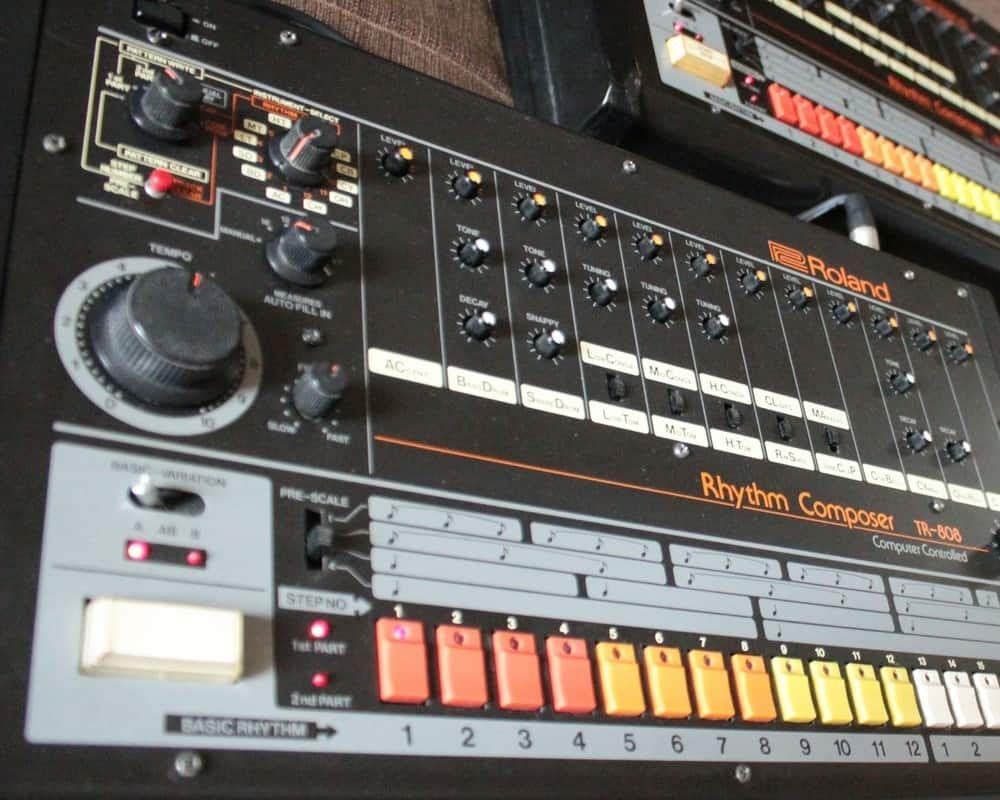
You should not confuse a drum machine with electronic drums – two different things. In the first case, wide buttons or pads are pressed to produce the sound. The second uses classic drumsticks.
For the quality of the imitation, an excellent sound card built into the drum machine and sampler and a productive processor with a powerful “RAM” are responsible. Inside and outside the device, in addition:
- tone generators with a full set of sounds of all known drums and percussion;
- the aforementioned pads that allow you to score any part manually;
- the built-in sequencer that allows you to edit what you’ve recorded;
- sufficient memory capacity for saving a lot of rhythmic patterns, or, as they are also called, patterns.
History of Creation
In fact, the drum machine was invented a long time ago. So long, in fact, that even incandescent light bulbs were not known to everyone at the time. It happened as early as 1930.
Primitive and poorly functional was the first drum machine, but it did not prevent its active use in the dance events of the time. Drum-machine danced the waltz, tango, and even swing. But the true popularity of the device came in the 1980s. It was a real explosion of electronic music
Types and Kinds
The nature of the instrument’s sound depends on the way in which the sound is created and shaped. Like synthesizers, modern drum machines can be divided into several types:
- analog;
- digital;
- hybrid.
Analog drum machines generate sounds on their own, and the analog circuitry is responsible for the formation. Although the number of timbres is limited, the sound of such instruments is richer and warmer.
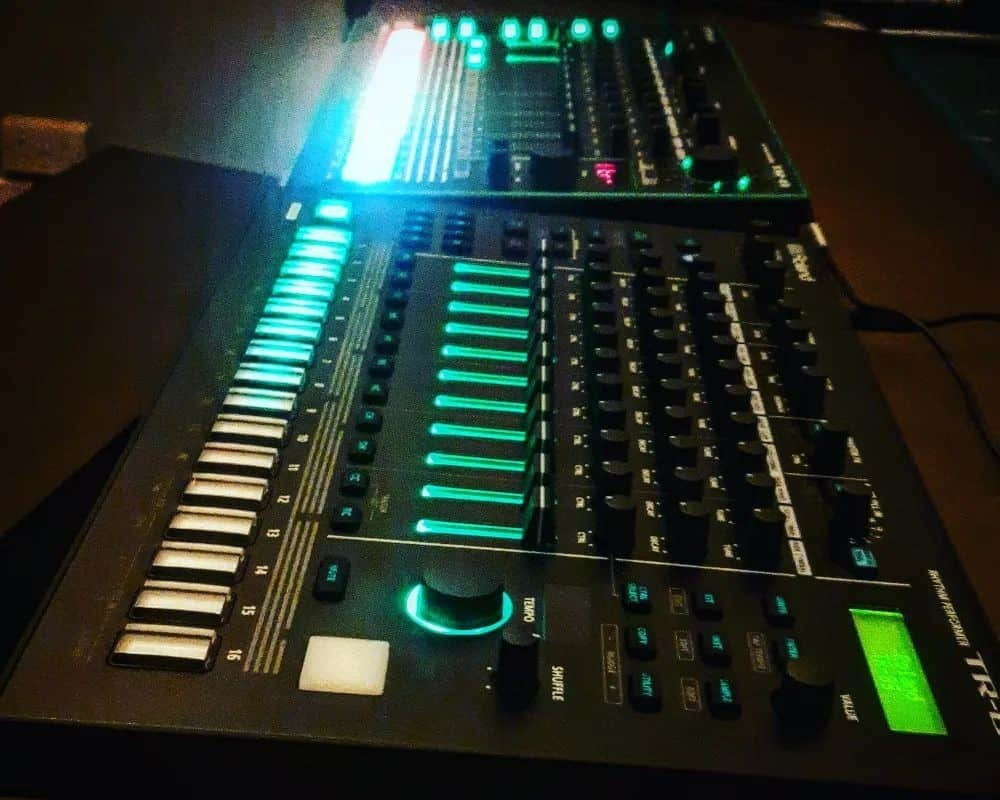
Digital drum machines can generate their own sounds or use pre-made samples. Built-in processors shape and process the sound. The choice of instruments is wider, and acoustic drum sounds are of much higher quality and more realistic.
Hybrid drum machines allow you to create your own timbres and work with samples. Functionality is as good as on the digital side.
Sizes
Sizes can range from very small pocket-sized to desktop studio models and clones of 80’s classics. You have to understand that the smaller the size of the machine, the more questions you will have about functionality and usability.
For example, with small knobs and a multi-level menu, it is uncomfortable to change parameters quickly. On the other hand, a heavy instrument is hardly suitable for tours. Larger, more functional units are great for studio work, smaller ones for small project studios and performing artists.
Using third-party samples
Hybrid and sampler drum machines let you use your own audio material. You can load samples of any kit preset, from high-quality recordings of live instruments from world-class studios to modern percussion modular systems.
Therefore, one sampler drum machine will allow you to have, for example, the entire TR series from Roland in one box. What distinguishes drum machines from complete samplers is the fact that their memory capacity is limited, so you can load only short van shots.
Built-in memory capacity
Drum machines without samples can store only patterns, presets, sequencer sequences, and settings. In sampler-type instruments, the memory allows you to store timbres and kit preset.
Accordingly, the amount of memory will determine the variety of instruments. Many instruments use a variety of memory cards or USB media for storage, which allows you to increase the size of your internal library.
What else is worth paying attention to?
Built-in sequencer, an integral part of a drum machine. In the past, a 16-step sequencer was the standard, in modern devices, you can find 64 or more steps. Some devices have a function to change the parameters on each step, which allows you to diversify the rhythmic pattern and give it character.
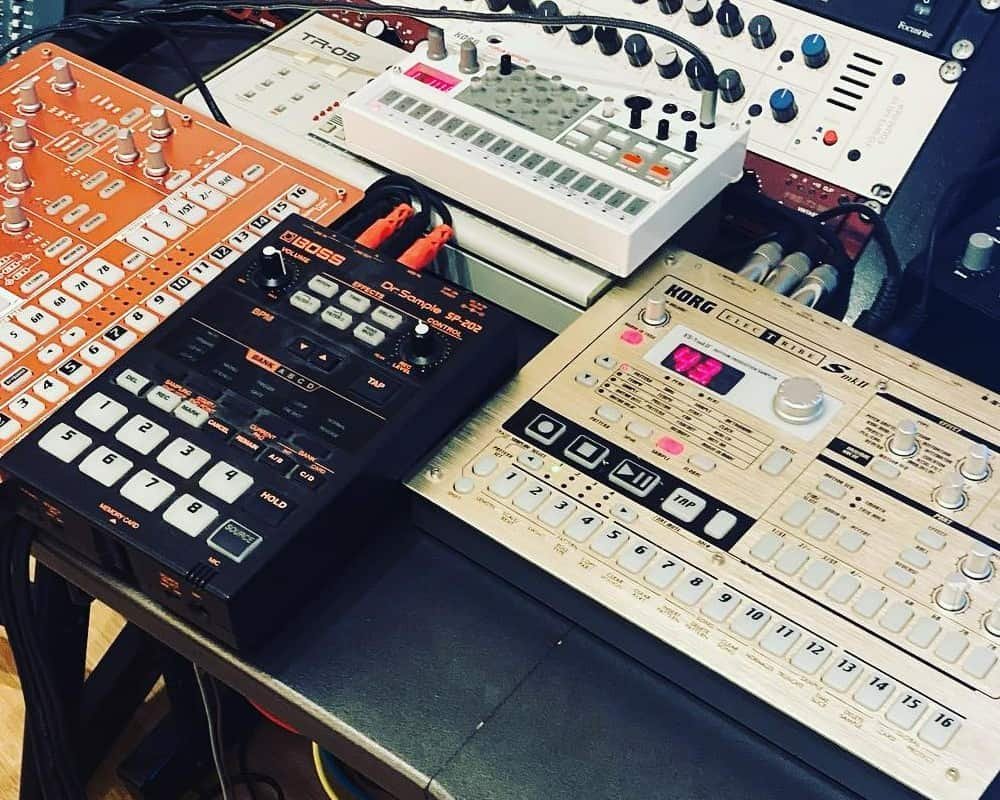
A MIDI sequencer to control external devices will be a big plus for performing musicians.
The number and type of audio outputs can also vary greatly: from a single 1/8″ mono output in very compact devices to studio devices with separate 1/4″ outputs for each sound.
USB allows not only to exchange information and transfer MIDI messages but also gives the possibility to record audio signals without additional wires and sound cards.
If the selected device is considered a portable option, it is worth paying attention to the battery-operated autonomous operation.
Frequently Asked Questions
Answers to frequently asked questions.
What equipment is used to make beats?
The answer to this question depends on what type of beats you are trying to make. If you are trying to make hip-hop beats, then you will need a drum machine, a sampler, and a sequencer. If you are trying to make electronic dance music (EDM) beats, then you will need a drum machine, a synthesizer, and a sequencer.
What is the point of a drum machine?
A drum machine is a musical instrument that creates drum sounds.
Is there a beat machine for beginners?
There is no definitive answer to this question as it depends on what you consider to be a “beat machine for beginners.” However, there are a number of different drum machines and sequencers on the market that could be considered suitable for beginners, depending on your needs and budget. Some popular options include the Roland TR-8, the Elektron Analog Rytm, and the Native Instruments Maschine.
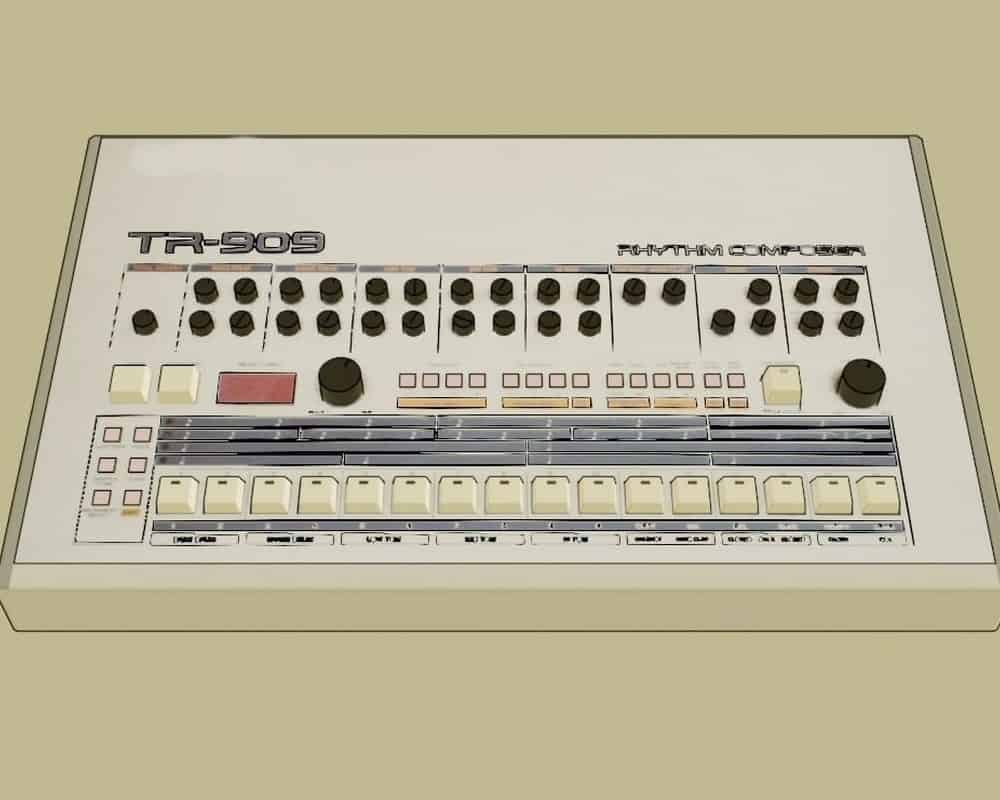
What is the most realistic sounding drum machine?
There is no definitive answer to this question as it depends on personal preference. Some people might find that drum machines with more natural sounding samples are more realistic, while others might prefer machines with more advanced features that allow for greater flexibility and customization. In general, however, drum machines with more natural sounding samples are usually considered to be more realistic.
Is making beats hard?
No, making beats is not hard. However, making good beats can be difficult. There are a number of things that go into making a good beat, such as finding the right samples, creating interesting melodies, and layering the tracks correctly. If you’re new to making beats, it can be difficult to know where to start. However, once you get the hang of it, you’ll be able to churn out great beats in no time.
Can you make beats with just a laptop?
Yes, you can make beats with just a laptop. You will need a laptop with a sound card and music production software. You can get creative with the software and create your own unique beats. But this method of creation is not as convenient as using a drum machine.
What is a sampler’s drum machine?
A beat sampler is a device that captures and records audio samples, which can then be played back at various pitches to create a melody or rhythm. A drum machine is a device that creates and plays back drum beats.
Also read:
Conclusion
In modern music, in any composition, the rhythmic element is the main component, and its arrangement nowadays is almost unthinkable without a quality drum part. But a good recording of live drums for one song, first of all, requires at least eight hours of studio work because for each song the instrument must be tuned again, which in itself is both painstaking and takes away valuable time in the studio.
And secondly, the size of the room allocated for the installation should be about 30 – 50 meters. Of course, a full-fledged drum recording in such a case would prove costly. That is why people who make their own arrangements resort to alternative solutions with the help of drum machines.
Yes, obviously, the device won’t be able to compete with a live virtuoso for a long time yet. But the technique is improving all the time, and meanwhile, drum machines are widely used for practicing live tracks for performances and practicing complicated rhythmic patterns. In addition, drum machines are combined with live sound, getting rich and bright sound.
I hope this article has answered your question about drum machines. If you still have questions, you can ask them in the comments.

